Pembroke Pines, FL Pollen and Allergy Report for Summer 2023
Pollen Allergy Trends in Pembroke Pines, FL
When is pollen lowest in Pembroke Pines, FL?

May
Lowest month total PPM
Avg. PPM
When is pollen highest in Pembroke Pines, FL?

April
Highest month total PPM
Avg. PPM
How does pollen in Pembroke Pines, FL compare to Florida?
Pembroke Pines has a lower average PPM than the state of Florida.
Pembroke Pines yearly avg PPM:
Florida yearly avg PPM:
How does pollen in Pembroke Pines, FL compare to the USA?
Pembroke Pines has a higher average PPM than the USA.
Pembroke Pines yearly avg PPM:
USA yearly avg PPM:
Is pollen worse this year in Pembroke Pines, FL?
Spring 2023 was better than spring 2022.
Spring 2023 PPM:
Spring 2022 PPM:
Average PPM in Pembroke Pines, FL
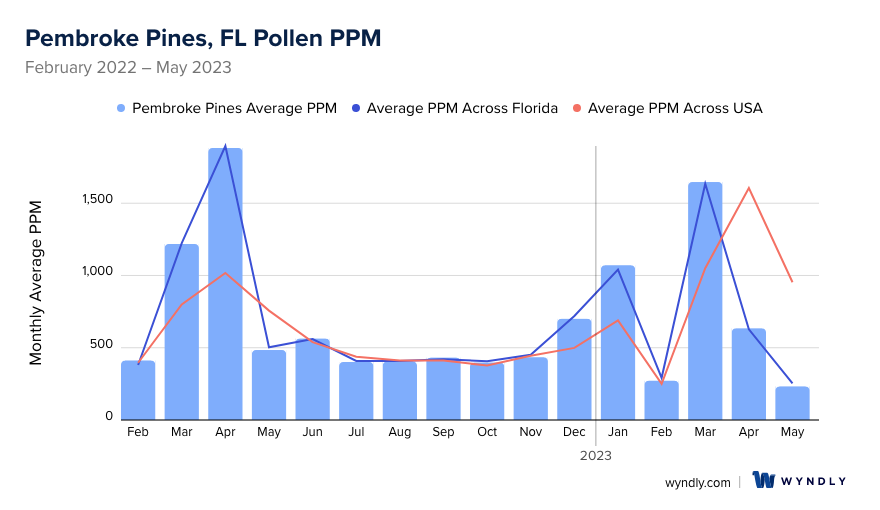
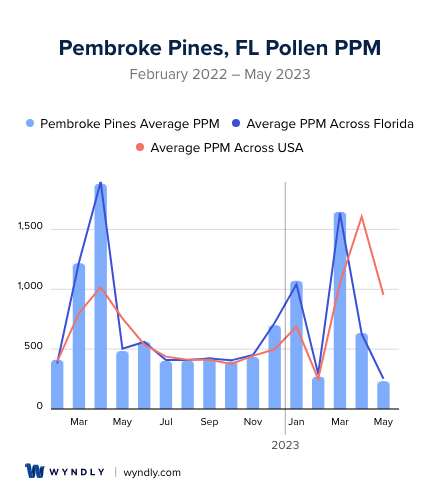
Pembroke Pines, FL Pollen and Allergy Breakdown by Month
Grass
When is grass pollen highest in Pembroke Pines, FL?
April has the highest grass pollen in Pembroke Pines, FL with an average PPM of
When is grass pollen lowest in Pembroke Pines, FL?
December has the lowest grass pollen in Pembroke Pines, FL with an average PPM of
Tree
When is tree pollen highest in Pembroke Pines, FL?
March has the highest tree pollen in Pembroke Pines, FL with an average PPM of
When is tree pollen lowest in Pembroke Pines, FL?
July has the lowest tree pollen in Pembroke Pines, FL with an average PPM of
Weed
When is weed pollen highest in Pembroke Pines, FL?
June has the highest weed pollen in Pembroke Pines, FL with an average PPM of
When is weed pollen lowest in Pembroke Pines, FL?
February has the lowest weed pollen in Pembroke Pines, FL with an average PPM of
Pembroke Pines, FL Pollen Monthly Breakdown by Pollen Type
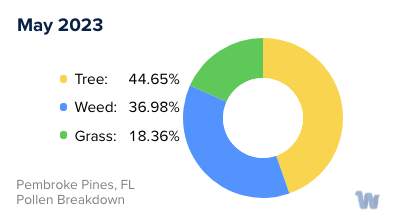
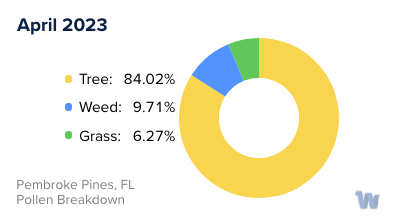
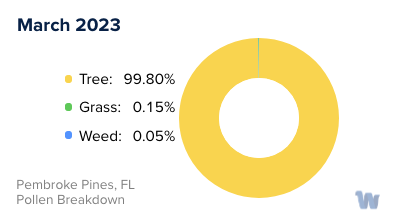
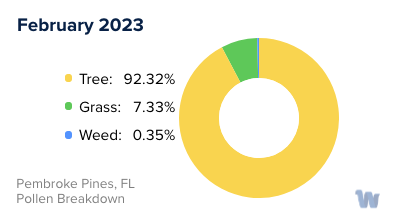
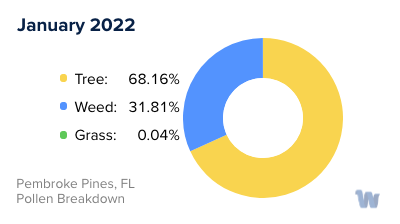
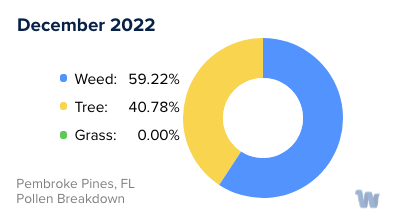
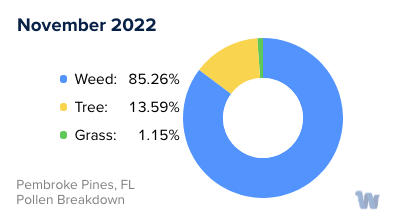
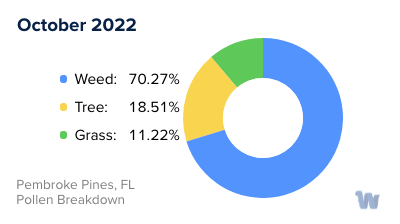
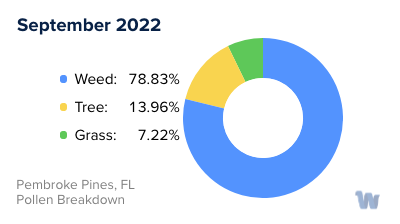
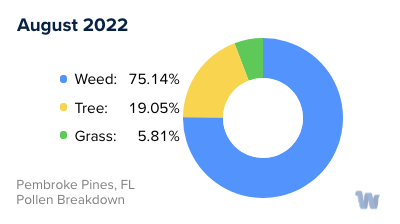
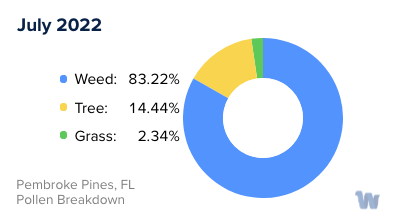
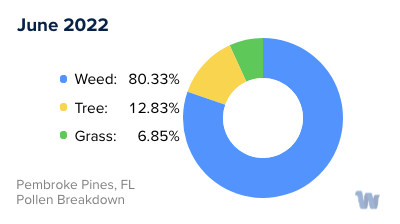
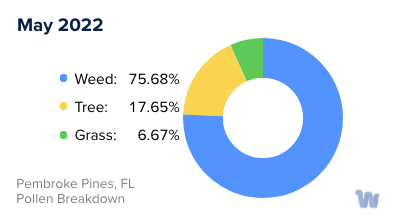
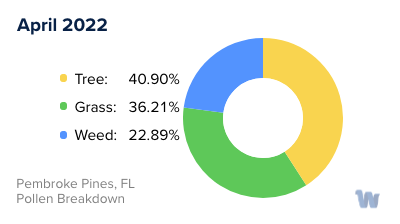
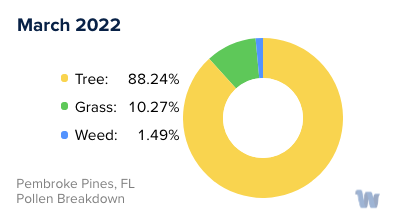
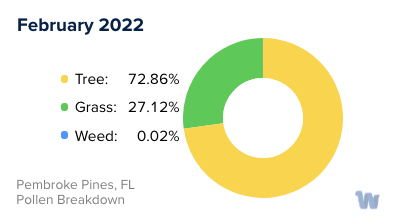
Pollen and Hay Fever in Pembroke Pines, FL
When you live in Pembroke Pines, Florida, and you're experiencing bouts of sneezing, runny noses, or itchy eyes, there's a good chance you're grappling with pollen allergies, commonly known as hay fever. This sunny city's climate and vegetation make it a hotbed for pollen production, triggering symptoms in those with sensitivities.
There are three primary types of pollen that individuals may react to in Pembroke Pines: tree, grass, and weed pollen. Each type peaks during different times of the year, resulting in a nearly year-round allergy season for some.
Tree pollen, predominantly from oak, pine, and cedar, is usually the first to arrive as winter transitions to spring. From late February through May, these trees release their pollen into the air, often visible as a fine yellow dust. If you find your allergies acting up during this period, tree pollen might be your culprit.
Next up, grass pollen season kicks in. The most common grasses in Pembroke Pines are Bermuda grass and Bahia grass, both of which release their pollen from late spring into the early summer months. This is why some individuals may notice their symptoms ramping up around May and continuing into July.
Finally, as the summer winds down and we move into the fall, weed pollen takes center stage. Ragweed is the primary offender here, releasing its pollen from late summer through the first frost. With Florida's milder winters, this can extend well into December.
It's important to note that weather conditions can influence pollen levels. Dry, windy days are ideal for pollen transport, spreading these microscopic particles far and wide. On the other hand, rainy days can help cleanse the air, providing temporary relief for those with pollen allergies.
Understanding the types of pollen and their peak seasons in Pembroke Pines can help you anticipate and prepare for your allergy symptoms. Knowledge is the first step in managing your health and ensuring you can enjoy the beautiful outdoors in Pembroke Pines, despite the pollen.


